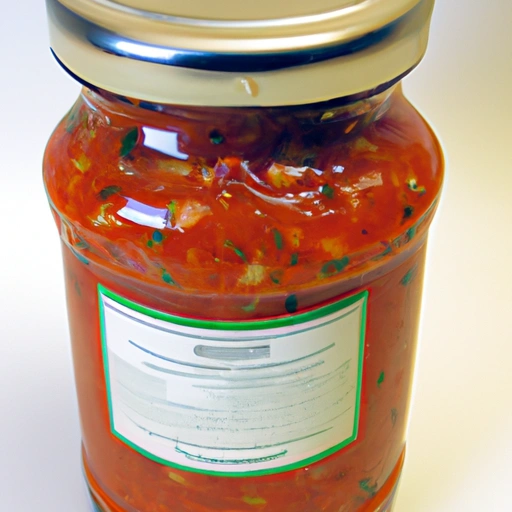Pasta Sauce
Description

Pasta sauce is a fundamental component in many culinary traditions, particularly within Italian cuisine. It is a versatile ingredient that can be made from a cooked or uncooked mixture of ingredients, primarily tomatoes, herbs, and often onions and garlic. Pasta sauce comes in various flavors, textures, and can range from a simple tomato sauce to more complex versions with added meats, vegetables, and spices.
Common uses
Pasta sauce is commonly used as a base or accompaniment to various pasta dishes. It can also be utilized as a component in stews, soups, and casseroles, or as a dipping sauce for breadsticks and appetizers. Its ability to enhance and complement the flavors of countless ingredients has made it a pantry staple in kitchens around the world.
Nutritional value
Calories
Typically, a serving size of 1/2 cup (approximately 128 grams or 4.5 ounces) of pasta sauce can contain around 70 to 80 calories.
Protein
Pasta sauce usually contains about 2 to 3 grams of protein per serving, depending on its ingredients.
Fat
The fat content in pasta sauce can vary widely based on the recipe and ingredients, with an average of 1 to 5 grams per serving.
Carbohydrates
Carbohydrates in pasta sauce are primarily from the tomatoes and any added sugars, averaging 10 to 15 grams per serving.
Vitamins
Pasta sauce is typically high in Vitamin C and Vitamin A, with varying levels of other vitamins depending on the specific ingredients used.
Minerals
Key minerals found in pasta sauce include potassium, iron, and calcium, contributing to its nutritional profile.
Health benefits
Pasta sauce can offer health benefits when made with fresh ingredients and without excessive added sugars or unhealthy fats. The tomatoes in the sauce are rich in lycopene, an antioxidant that may help reduce the risk of certain diseases. Additionally, incorporating vegetables and herbs can provide essential nutrients and fiber.
Potential risks
Prepared pasta sauces may contain high levels of sodium and added sugars, which can contribute to various health issues if consumed in excess. It's important to check labels when purchasing store-bought sauces or to make homemade sauce with fresh, whole ingredients to control the levels of these additives.
Common recipes
Pasta sauce is used in a plethora of recipes including spaghetti, lasagna, pizza, meatball subs, and ratatouille. It's also a base for other sauces like vodka sauce or arrabbiata.
Cooking methods
Methods for preparing pasta sauce range from simmering on the stovetop to baking in the oven. Some sauces are even served raw, as with the classic Italian 'salsa cruda'.
Pairing with other ingredients
Pasta sauce pairs beautifully with a variety of foods including pasta, meats like chicken or beef, seafood, vegetables, and grains such as rice or polenta.
Summary
Pasta sauce is a diverse and essential ingredient that plays a crucial role in many dishes from European and American cuisine. Its rich history and nutritional profile make it a beloved component of balanced meals. Whether made from scratch or purchased, it can be a wholesome and flavorful addition to many meals, as long as one is mindful of the potential for added sugars and sodium.